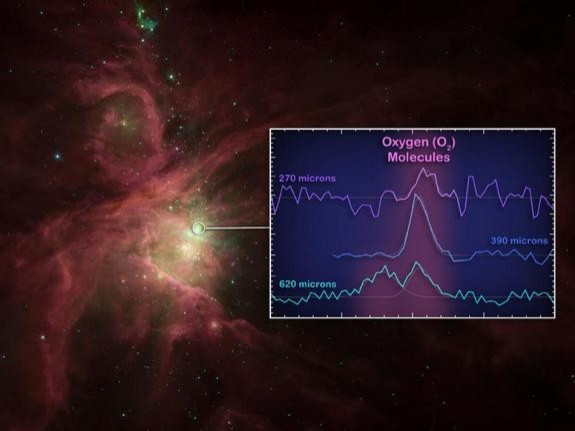Take a Deep Breath: Oxygen Molecules Discovered in Space

Astronauts looking for a breath of fresh air have two options: return to Earth or travel some 1,500 light years to the Orion Nebula, where astronomers have for the first time found evidence of oxygen molecules in space.
Astronomers used a telescope and infrared detectors at the European Space Agency's Herschel Space Observatory to locate the molecules in a star-forming region of the Orion Nebula. While individual atoms of oxygen are common in space, especially near huge stars, this was the first time that astronomers had located molecular oxygen, which is formed of two bonded oxygen atoms and makes up about 20 percent of the air we breathe on Earth.
"Oxygen gas was discovered in the 1770s, but it's taken us more than 230 years to finally say with certainty that this very simple molecule exists in space," Paul Goldsmith, NASA's Herschel project scientist, said in a press release.
The discovery caps decades of searching, as astronomers employed balloons and telescopes to confirm their belief that oxygen molecules exist in space. Goldsmith emphasized that confirming their existence does not answer questions about how the molecules were formed, or why they found them where they did.
"This explains where some of the oxygen might be hiding," said Goldsmith. "But we didn't find large amounts of it, and still don't understand what is so special about the spots where we find it. The universe still holds many secrets."
The current theory is that the oxygen was locked in ice that encased fragments of space dust, and that exposure to starlight then released the warmed grains. That would render them effectively invisible, which is why the team relied on infrared sensors to find them.
Oxygen is the third most common element in the universe.
© Copyright IBTimes 2024. All rights reserved.





















